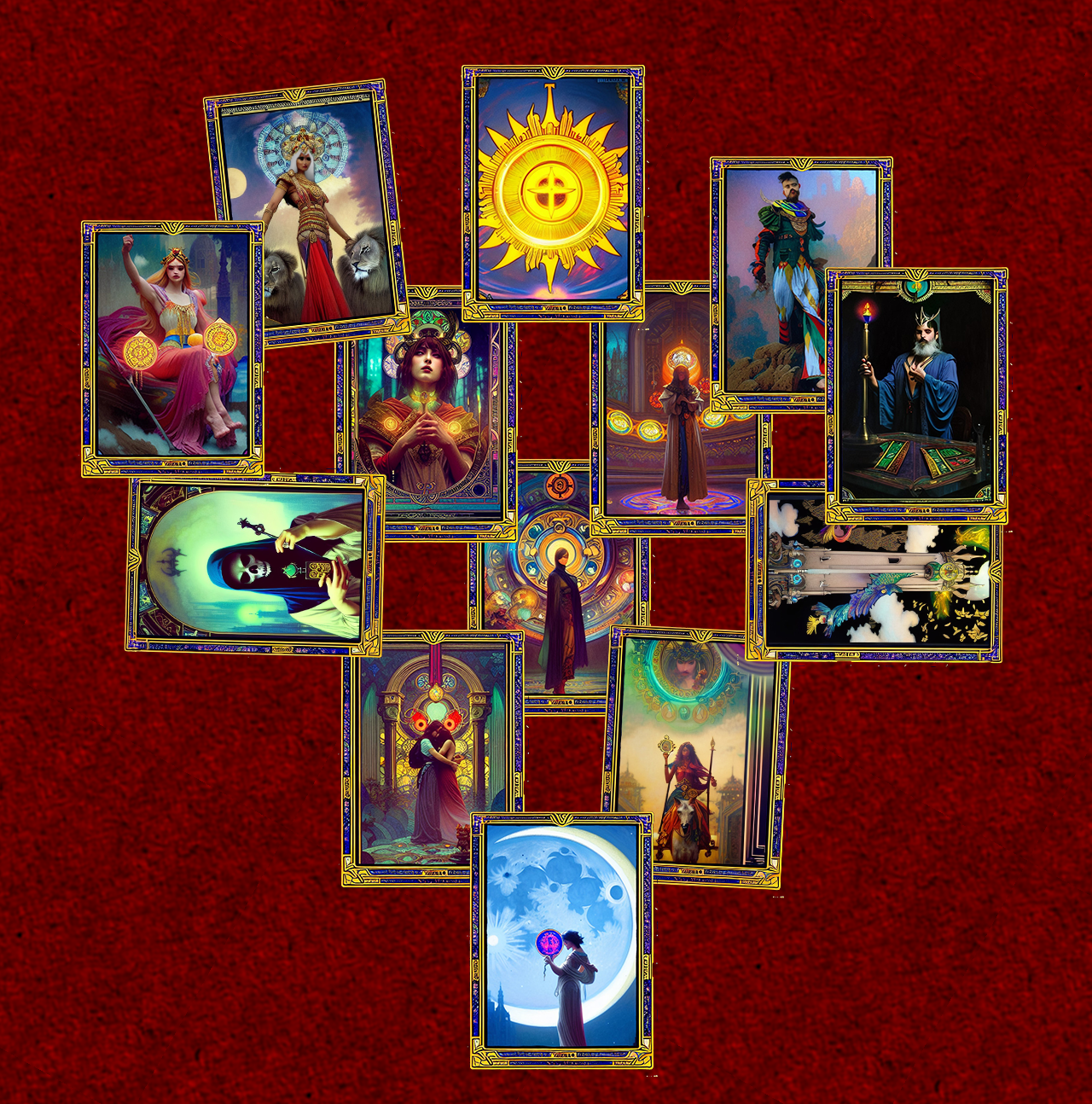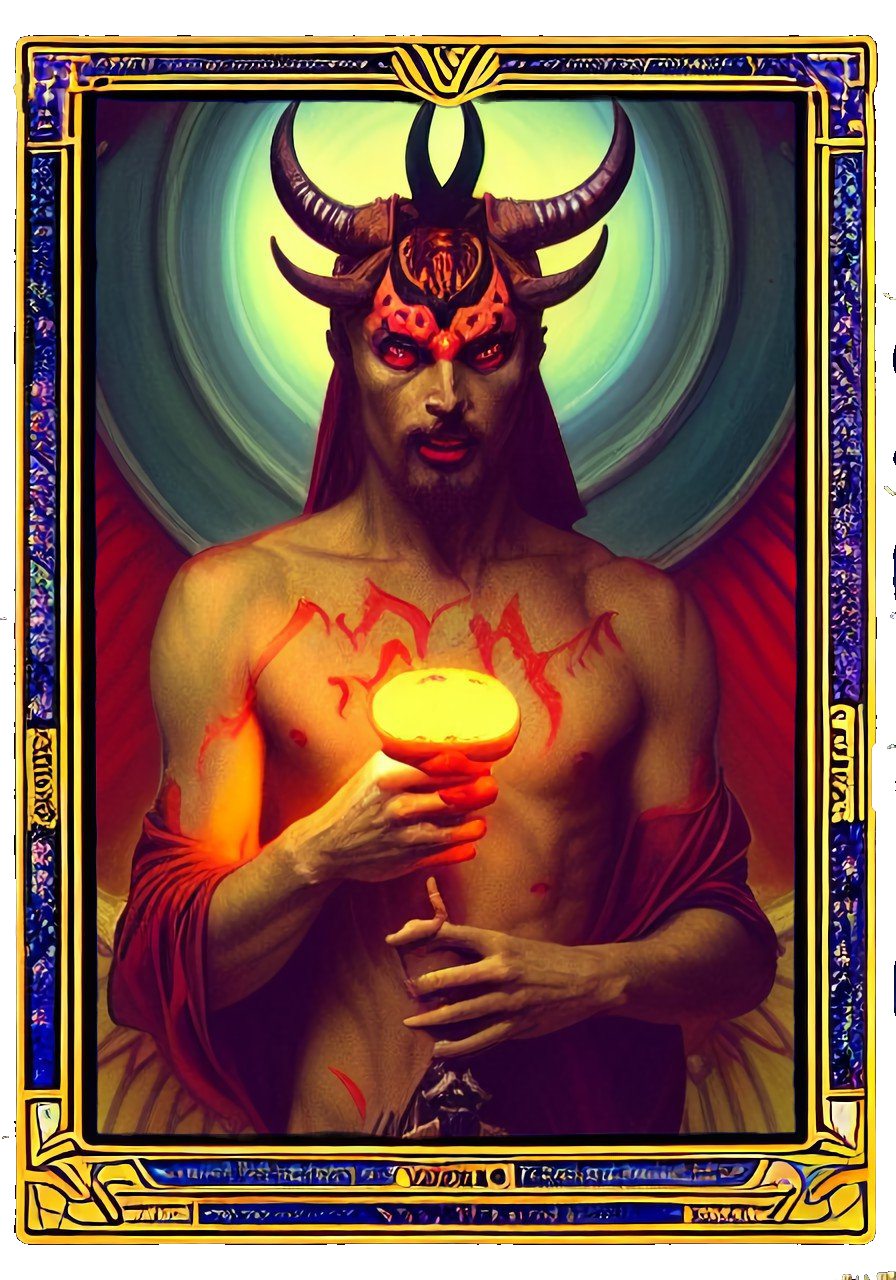Czilkir Deck
While they are subject to endless variation, Czilkir decks come in three broad categories:
- The most common--and typically most cheaply-made--are the 56-card decks that can be found in most taverns and the pockets of dedicated gamblers. This deck is used for a number of common games.
- Less common are the complete 78-card decks that can be used for some games but are mostly used by fortune-tellers to predict the future. The fortune-telling decks in particular tend to be more elaborate than more common decks, often featuring detailed illustrations on standard cards rather than just symbols indicating suit and number.
- Lastly, there are the decks used by Fatespinners in their craft, which are often referred to as "true Czilkir decks." Like fortune-telling decks, these contain 78 cards, but the cards of each deck are unique. It's claimed that these cards are completely blank when they are first presented to an apprentice Fatespinner and that the images magically appear on them as the initiate advances in their craft. The images are perfectly keyed to the Fatespinner, allowing them to immediately recognize the meaning of the card. This often means that Fatespinner decks lack the standard markers for certain cards in favor of people, places, and things from the Fatespinner's personal experience. The cards in Mad Ndolya's Czilkir deck, for example, appear to be just random scribbles and blobs of color with no discernable subject matter.
Mechanics & Inner Workings
The Deck
Minor Arcana
The basic 56-card deck contains 4 suits (Swords, Staves, Coins, and Cups) of 14 cards each. Though fortune-telling decks have specific images associated with each card that relate to the card's meaning, they are still commonly referred to only by value and suit ("Two of Cups" or "Nine of Staves"). The remaining four cards are the court cards: Count (King), Countess (Queen), Champion (Knight/Jack), and Knave (Page/Valet/Prince). In most games, the Ace (one) may be used as either the lowest or highest card in the suit.Major Arcana
The additional 22 cards are called the Major Arcana. When they come up during a divination, they are believed to represent especially important fates, often pointing to situations outside the questioner's everyday experience.Note: The format for the list below is Card Name (Tarot equivalent name, if different) - Alternate Names/Versions, separated by commas. If the name is bolded, it is the original/traditional name for the card.
- The Fool - Jester
- The Wizard (The Magician) - Magician, Sorcerer, Warlock, sometimes replaced with a wizard of a particular type (Wyrmtongue, Varosimancer, etc.)
- The Witch (The High Priestess) - Wise Woman, Priestess, Grandmother, Sorceress, also sometimes replaced with the paractitioner of a particular type of magic, but this is less common than with the Wizard.
- The Empress - Midwife, Druidess, Dryad
- The Huntsman (The Emperor) - High King, Dragon King
- The Elder (The Hierophant) - High Priest, Grandfather
- The Lovers
- The Chariot - The Soldier, The Horse Lord
- The Peacekeeper (Justice) - The Magister, The Duelist, The Judge
- The Hermit - The Sage, The Vizier, The Wise Man
- Fate's Web (The Wheel of Fortune) - The Trickster, Chance
- Strength
- The Hanged Man - The Martyr
- Death
- The Healer (Temperance) - The Nightengale
- The Demon (The Devil) - The Old Dog, The Tempter
- The Tower - The Dragon
- The Muse (The Star)
- The Moon
- The Sun
- The Weigher (Judgement)
- Destiny (The World)
The 23rd Major Arcana
There are legends of a 23rd Major Arcana card that Fatespinners occasionally draw when doing a reading. Unlike the other cards in a Fatespinner's deck, this phantom card always depicts the same thing: A golden apple with a word carved into it in an unknown alphabet. The card's meaning, which the Fatespinner instinctively realizes when they draw the card, is different every time but always involves a world-changing event.True Decks
The Czilkir decks used by Fatespinners are so different from the standard deck and one another that even those who know the owner well often have difficulty deciphering which card a particular image represents. Despite this, Fate's Hand players who use the deck always know exactly which cards they've drawn. While they will remember which cards the drew after the game is over, they will have difficulty recalling what those cards looked like. If true deck is separated from its owner, the images on the cards eventually fade away. How long this takes seems to depend whether the owner is dead or alive, how long they've owned the deck, and how powerful they are (or were). If the rumors are true, the images on the cards that belonged to Torgo the Doomsayer (who predicted the death of Kirlyok) are still faintly visible today. Fatespinners are known to sleep with their Czilkir decks under their pillows, but it's not clear whether this is related to the magic that sustains the images or an attempt to keep the deck secure while the wizard sleeps is unclear. There are a number of legends and theories concerning the magical uses and properties of true Czilkir cards, but the difficulty of obtaining such cards, much less making sure you're using the right one, makes these beliefs hard to prove or disprove.Manufacturing process
Czilkir cards are typically printed from woodcuts, though engraved metal plates are occasionally used. It's common for either the card maker or the deck owner to add color (especially to the more prominent cards) by hand. Decks that are entirely hand-painted are available, but are typically quite expensive and must be commissioned (and at least partially paid for) in advance. The manufacturing process of the cards used by Fatspinners is a closely-guarded secret.
History
Czilkir decks originated with the people of the Czil River Valley somewhere in the distant past. According to legend, the standard form of the deck was revealed to a pig farmer's wife in a dream by some ancient god and the first Czilkir deck consisted of crudely-drawn images made on strips of cured pigskin. As soon as the deck was complete, the pigwife experienced another dream where the god taught her how to predict a person's future by laying out the cards in a particular pattern. Her predictions were very accurate and as word spread people form neighboring villages and then distant towns arrived at the pig farm to learn their fate.
Eventually the pigfarmer's wife had more customers than she could see, so--after commissioning a local artist to make new decks of painted linen backed with hardened leather--she taught her daughters how to use the cards. Her daughters taught their daughters, who taught their daughters, and so on to the present day. Although the craft was originally passed to daughters because sons were kept busy helping on the farm, the practice has led many to believe that women are more naturally inclined to using the decks than men. This is untrue. What is true is the belief that the Czilkir people have a special insight into using the cards. The reason for this is simple: The pigwife'd descendants have never shared their secrets with outsiders. Non-Czilkir fortune tellers rely on an approximation of the craft arrived at through studying Czilkir readers at work.

Czilkir Card Layout by Steve Johnson
Rarity
Most taverns and coffee houses keep a standard deck of Czilkir cards on hand for use by patrons, and the cheaper decks can be easily obtained by anyone who has the money. Fortune-telling decks are more difficult to find and must generally be specially commissioned or purchased second-hand. True decks are given to Fatespinners when they begin their training. Decks stolen or taken from deceased Fatespinners are sometimes offered for sale (though never on the open market), but since the images on these decks fade without contact with the fatespinner they are of limited use to most people.
Raw materials & Components
The most common Czilkir decks are made from the same kind of layered paper as more common playing cards, but there are a number of variations. Composite decks often involve attaching the cloth or paper containing the design to a backing of metal foil, thin wood, stiff leather, or some other material. Single-piece cards can also be made from painted or engraved metal, tile, or wood.
The true Czilkir decks used by fatespinners are made from an unknown substance that's often compared to stiff silk. The most common theory about the cards' manufacture is that they are made of cloth spun from Eyeder webs and stiffened through an unknown alchemical process.

Fate's Web Czilkir Card by Steve Johnson

The Demon Czilkir Card by Steve Johnson





Comments